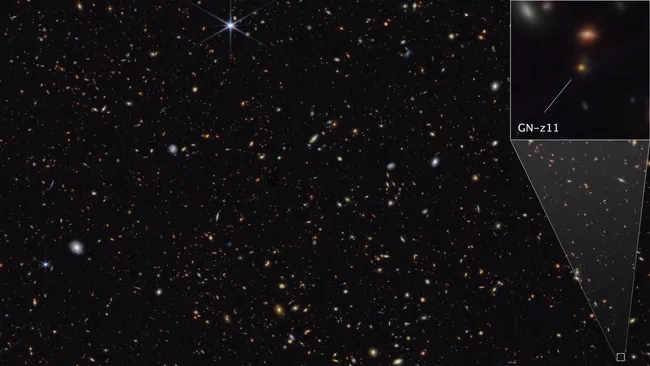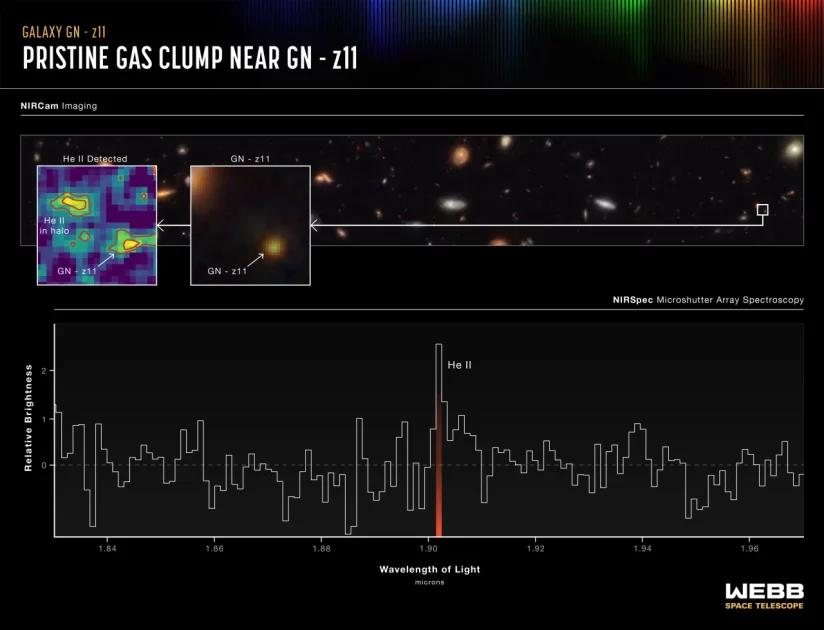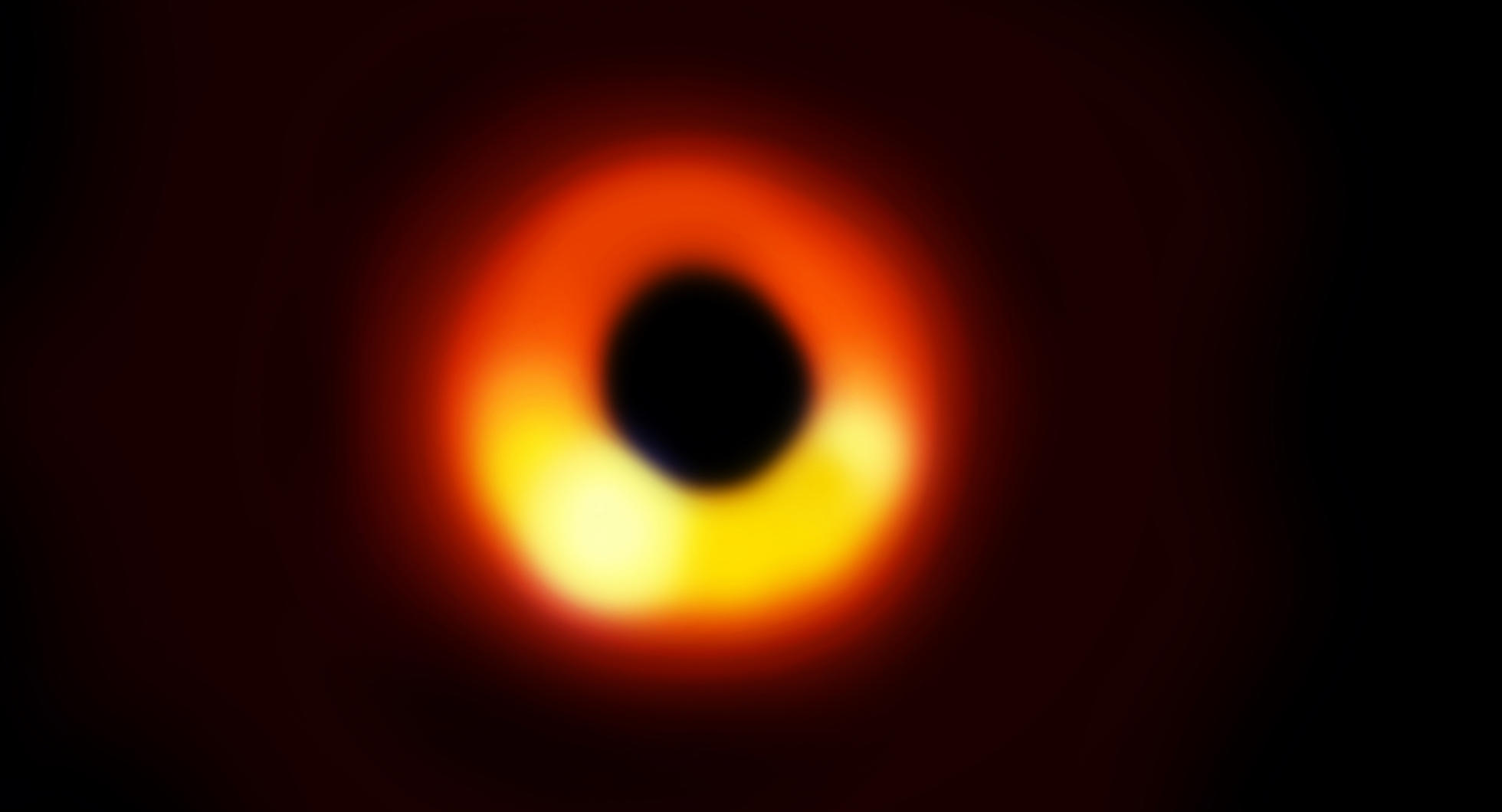James Webb Space Telescope found supermassive black hole, early stars in the cosmic horizon

Once this universe was a dark space, simple and void. Over time, it developed with telescopic technology into the complex network of galaxies and stars. Now, the James Webb Space Telescope (JWST) is reshaping our understanding of the universe by expanding our knowledge and uncovering the secrets hidden within the depths of space. Among its remarkable discoveries are GN-z11’s supermassive black hole and the population-III stars, as described in two separate new papers.
Initially glimpsed by the Hubble Space Telescope in 2015, GN-z11, a mysterious galaxy, has captured the attention of astronomers for its extraordinary luminosity and its position in the early history of the universe. The galaxy, located 13.8 billion light-years away from home, existed a mere 430 million years after the Big Bang. Astronomers are excited about the baby universe as it provides a window into its infancy.
A team of researchers, led by Roberto Maiolino of the University of Cambridge, peered into the heart of GN-z11 through the Webb’s Near-Infrared Camera (NIRCam) and Near-Infrared Spectrometer (NIRSpec). They discovered the first clear evidence of the galaxy hosting a central, two-million-solar-mass supermassive black hole rapidly accreting matter.
“We found extremely dense gas that is common in the vicinity of supermassive black holes accreting gas,” principal investigator Roberto Maiolino of the Cavendish Laboratory and the Kavli Institute of Cosmology at the University of Cambridge in the United Kingdom said.
“These were the first clear signatures that GN-z11 is hosting a black hole that is gobbling matter.”
This finding makes the mysterious object the farthest active supermassive black hole identified to date.
In another paper, Maiolino’s team found evidence of the universe’s first generation of stars, known as Population III stars. These primordial stellar entities, born from the pristine gases of hydrogen and helium, represent the dawn of cosmic illumination, free from the heavy elements forged in the fiery hearts of their successors.

In addition, the researchers also discovered a pristine gaseous clump of helium in the halo of GN-z11. This finding indicates the potential formation of Population III stars, the first stars composed mainly of hydrogen and helium, which are a significant goal in modern astrophysics. Those stars didn’t have any heavy elements because they formed before other stars. They were made only of basic elements like hydrogen and helium from the Big Bang. They were very bright and probably had hundreds of times more mass than our Sun. If we go with the Big Bang theory, it was the transitional phase of the universe from an initial dark and relatively uncomplicated state to the intricate and structured cosmos we observe today. However, astronomers have not yet directly observed Population III stars; Maiolino’s team just uncovered this indirect evidence of their existence in GN-z11.
“The fact that we don’t see anything else beyond helium suggests that this clump must be fairly pristine,” said Maiolino in a statement. “This is something that was expected by theory and simulations in the vicinity of particularly massive galaxies from these epochs — that there should be pockets of pristine gas surviving in the halo, and these may collapse and form Population III stars.”
The paper on NIRCam observations of the black hole was published on 17 January in the journal Nature. The study on the ionized helium clump and Population III stars has been accepted for publication in the journal Astronomy & Astrophysics.
Auto Amazon Links: No products found.


